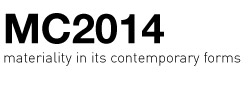Kas Oosterhuis (Hyperbody TU Delf)
Professor Kas Oosterhuis studied architecture at the Delft Technical University. In 1987-1988 he taught as Unit Master at the AA in London and worked / lived one year in the former studio of Theo van Doesburg in Paris together with visual artist Ilona Lénárd. Their design studio is in 2004 renamed into ONL [Oosterhuis_Lénárd]. As from 2007 Kas Oosterhuis is a registered architect in Hungary, executing as General Designer the CET project. From 2000 Oosterhuis is appointed professor digital design methods at the Delft Technical University and is currently leading a staff of 12 researchers at his Hyperbody group, the knowledge center for Nonstandard and Interactive Architecture at the TU Delft, while conducting a full master design studio program. Kas Oosterhuis is Director of the protoSPACE Laboratory.
Kas Oosterhuis is member of the Dutch Building Information Council [BIR].
In his most recent book “Towards a New Kind of Building, a Designers Guide to Nonstandard Architecture” [NAi Publishers 2011] Oosterhuis reveals the fundaments of his personal design universe, which embraces the paradigm shift from standard to nonstandard structures and from static to dynamic buildings as the initial condition. He has been the co-founder of the Attila Foundation, responsible for the groundbreaking Sculpture City event in 1994 and the ParaSite weblounge in 1996. He has lectured worldwide at numerous universities, academies and international conferences since 1990.
Kas Oosterhuis has initiated two GSM conferences at the TU in Delft on the subjects multiplayer game design, file to factory design and build methods and open source communication in the evolutionary development of the 3d reference model. In 2012 ONL received the Wood Innovation Award for their climbing Wall system. In 2008 the Autodesk BIM Experience Award for the CET Project in Budapest. Further award winning building designs include the Saltwater Pavilion at Neeltje Jans [Gold Award 1997 for innovative recreational projects, nomination Mies van der Rohe Award 1998], the Garbagetransferstation Elhorst/Vloedbelt in Zenderen [Business Week / Architectural Record Award 1998, OCE-BNA Award for Industrial Architecture 1996, Aluminium Design Award 1997] and the Hessing Cockpit in Acoustic Barrier in Utrecht [National Steel Award 2006, Glass Award 2006, Dutch Design Award for Public Space 2006, nomination Mies van der Rohe Award 2008, nomination Golden Pyramid 2006]. In 2013 Oostnerhuis was intiator and appointed as editor-in-chief of the new scientific journal Next Generation Building.
Lecture thematic
Title : Game Changers
We are living inside evolution. There is nothing more exciting than to realize that the billions of components which constitute today’s built environment are subject to continuous change and evolution. Specifically in the building industry the major game changer is the shift from mass production methods to made to measure processes for the masses. Now both the production industry and the individual makers can produce series of unique nonstandard components cheaper and better than the earlier series of the same which earmark the building boom we have left behind us. This paper addresses the implications of the long tail of the building industry revolutionizing the next generation buildings. Buildings will never be the same, there will no more repetition of components from a catalog, each design will create its own families of uniquely shaped parametric building components, uniquely behaving distributed climatic devices and personalized interaction apps effectuating the movements and intentions of the users in real time. The next generation building is fundamentally generic, following simple rules as to generate complexity, based on open design systems, its design being inherently participatory and inclusive. The actuating climatic and structural building and interior components cooperate with their identified users as in a swarming hive of things and people.
